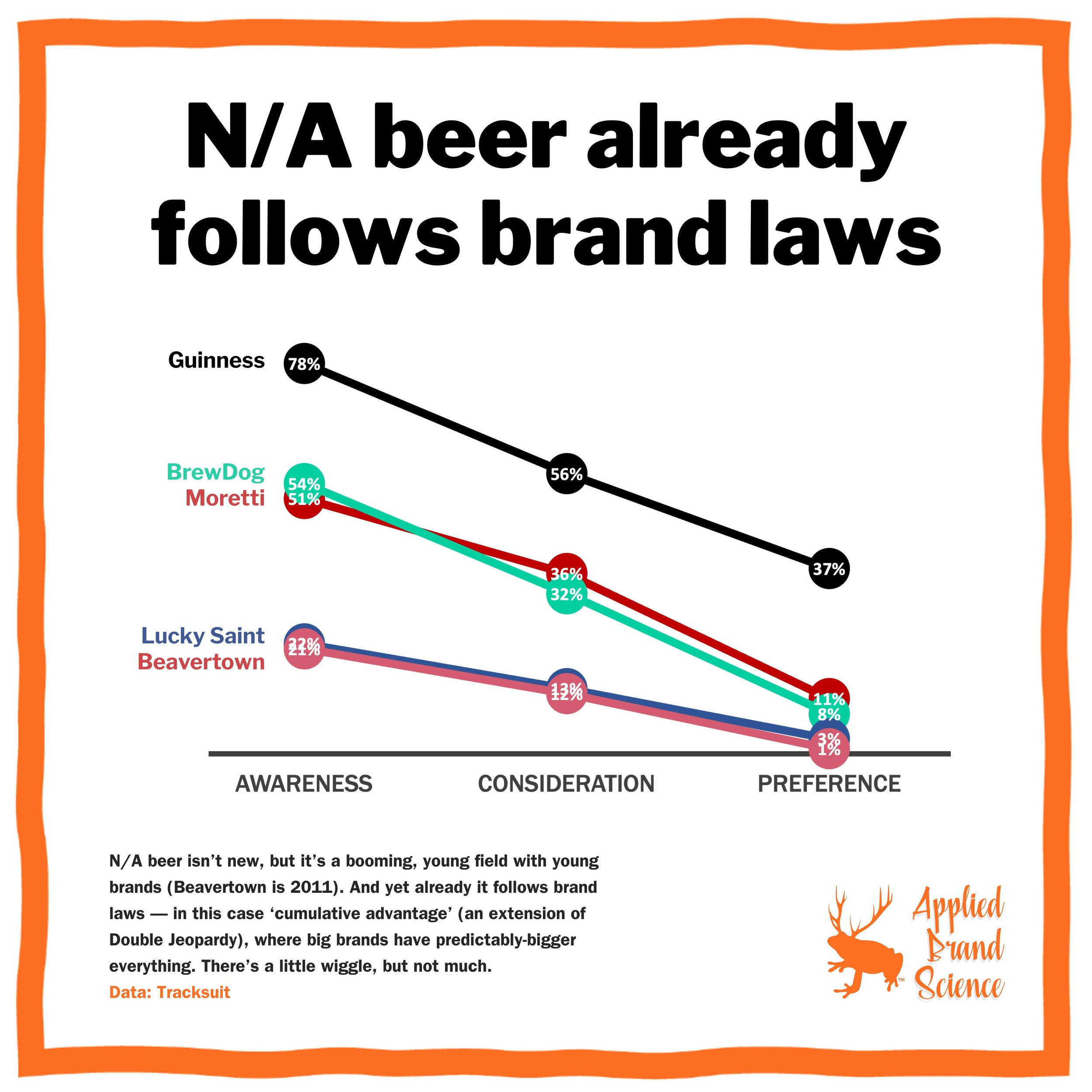Do new categories follow brand laws?
F’rinstance, does a rapidly-changing, relatively-young category still adhere to the "laws of brand physics?"
My friends at Tracksuit recently shared some data about the UK N/A beer market. N/A beer isn’t new, but it’s a booming, young field with young brands (Beavertown, 14 yrs) and old ones (Guinness, 266 yrs).
They looked at the purchase funnels for a few key brands. And sure enough, the category already follows brand laws.
In this case, we see that big brands have more of everything (awareness, consideration, preference) and smaller brands have less. This is an extension of a brand science law called Double Jeopardy, where big brands predictably have more buyers AND higher repeat purchase (aka “loyalty”). Some call this a Double Jeopardy effect, and others call it “cumulative advantage.”
There’s a little wiggle, but not much.
Some lessons:
🔸Assume that even young and fast-changing categories are likely to follow brand laws, and that they’re not somehow immune to ‘brand physics’.
🔸Assume that even young and fast-changing brands do too.
🔸Compare your situation vs the expectations from the laws (‘wiggle”), NOT category averages.

